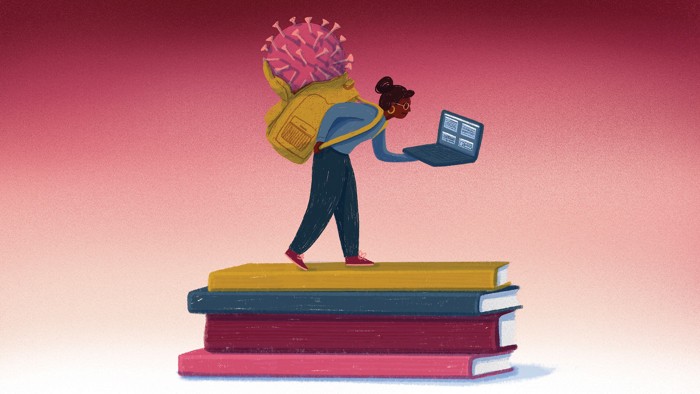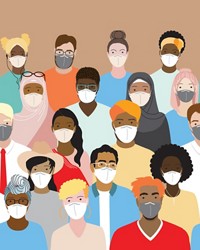Advertisement
Grab your lab coat. Let's get started
Welcome!
Welcome!
Create an account below to get 6 C&EN articles per month, receive newsletters and more - all free.
It seems this is your first time logging in online. Please enter the following information to continue.
As an ACS member you automatically get access to this site. All we need is few more details to create your reading experience.
Not you? Sign in with a different account.
Not you? Sign in with a different account.
ERROR 1
ERROR 1
ERROR 2
ERROR 2
ERROR 2
ERROR 2
ERROR 2
Password and Confirm password must match.
If you have an ACS member number, please enter it here so we can link this account to your membership. (optional)
ERROR 2
ACS values your privacy. By submitting your information, you are gaining access to C&EN and subscribing to our weekly newsletter. We use the information you provide to make your reading experience better, and we will never sell your data to third party members.
Undergraduate Education
Covid-19
Pandemic stress: The toll it’s taking on students
Students describe the challenges of online classes, lost opportunities, and more
by Wynne Parry, special to C&EN
January 10, 2021
| A version of this story appeared in
Volume 99, Issue 2

College got off to a good start for Ella Habbeshaw. She got all As during her first semester at the University of Utah and declared a major in a subject she loved: chemistry. Last March when the COVID-19 pandemic shut down large parts of the world, she, like so many other students, traded the classroom for a computer screen.
Over the summer and in the fall, Habbeshaw continued taking mostly online courses. Her early momentum vanished.
“There’s something so motivating about being in a classroom and being around people who want to do the same thing as you and professors who have already done the things that you want to do,” says Habbeshaw, now a sophomore. “Over Zoom, it’s hard to have all those conversations with people.”
Impact of COVID-19 on college student mental health
In a survey conducted from March through May 2020, 12,033 students on seven US campuses were asked whether mental health impaired their academic performance for more than 6 days in the previous 4 weeks. The data were compared with data collected in fall 2019.
Students reporting that their mental health negatively impacted their academic performance, %
Fall 2019
21.9
March–May 2020
30.5
Source: Healthy Minds Network and American College Health Association, The Impact of COVID-19 on College Student Well-Being, 2020.
This new academic struggle has given her what she describes as an identity crisis, causing her to question if she’s worthy of her ambition of getting an MD-PhD and going on to work at a university. “I’ve been struggling so much, and it’s made me second-guess myself—if I’m good enough to do the things that I want to do,” she says.
The past year has been a tough one for many people. And students—both undergraduates and those in graduate school—are no exception.
While students’ experiences can vary wildly depending on their personal circumstances, chemistry students and others in STEM (science, technology, engineering, and mathematics) tend to share certain difficulties. Some have lost career-building internships or opportunities to participate in research. Some face difficulties in completing their research projects or uncertainty in the job market. The pandemic has also cost some students much-needed income, left them fearing infection, and taken loved ones’ lives.
Since the pandemic began spreading across the world nearly a year ago, some of the students who have continued with online learning have made the best of the switch,developing strategies, like taking better notes, to compensate. Nevertheless, many students continue to struggle with distance learning.
Beyond the pandemic, this past year also saw a contentious election in the US; the gruesome killing of George Floyd, a Black man, by Minneapolis police, and global protests in response; and devastating natural disasters. Psychological strain has been unavoidable, but a picture of the full impact on students’ mental health is still emerging.
What the data say so far
A 2020 national survey by the American Psychological Association (APA) reports that while most US adults say the pandemic is a significant source of stress, those aged 18 to 23 seem to be taking it the hardest, a difference the APA attributes to the experience of starting adulthood during such uncertain times.
Over the summer, another team of researchers surveyed 3,500 graduate students in different fields at 12 US public universities. Their responses revealed significant evidence of hardship, including worries about food and housing, delays in research, and disruptions to career plans.
Data from university and college counseling centers paint a complicated and incomplete picture. Two short surveys by the Association for University and College Counseling Center Directors (AUCCCD) in the fall of 2020 show a drop in demand, with fewer students seeking counseling and students making fewer appointments. Experts suspect several factors may be driving the decline: More students may be seeking help off campus, while some may benefit emotionally from being with family. Meanwhile, for others, an unsympathetic environment at home may prevent them from pursuing counseling.
“I do worry about the students we’re not seeing because they’re in a situation where either they literally don’t have the privacy or they’re in a home where family members may not be supportive or believe in counseling,” says Sharon Mitchell, senior director of student wellness at the University at Buffalo whose term as president of the AUCCCD ended in mid-October.
In the AUCCCD’s early-fall survey, center directors also reported an increase in students experiencing anxiety, loneliness, and other difficulties, suggesting that although fewer students are seeking help, those who do are in greater distress, Mitchell says.
A difficult path gets harder
Grad student stress during COVID-19
A survey conducted from June to July 2020 of approximately 3,500 graduate students at 12 US public research universities showed:
25%
were worried about food or housing
25%
expected it would take longer to complete their degrees
17%
had changed their career plans since the pandemic began
18%
had parenting or caregiving responsibilities
67%
received a low score on questions evaluating mental well-being
Source: Craig Ogilvie, et al, NSF RAPID: Graduate Student Experiences of Support and Stress During the COVID-19 Pandemic, 2020.
While undergrads were struggling with online classes, grad students were among those figuring out how to teach them. In STEM fields, grad students are often more than students: they also teach or conduct research as employees. Even before the pandemic, many were managing difficult work in a culture that can demand long hours, often for low pay. Depending on their postgraduation plans, some face an extremely competitive job market. A prepandemic survey by Nature (2019, DOI: 10.1038/d41586-019-03459-7) points to both the strain and the rewards of getting a PhD in science. While three-quarters of the 6,320 students who responded said they were satisfied with their PhD experience, more than a third reported they had sought help for anxiety or depression caused by their studies.
“Graduate school is not always an easy journey for students,” says Craig Ogilvie, dean of the graduate school at Montana State University. The pandemic has led to “a real exacerbation of all the things that were already going on,” he says. Ogilvie and a team surveyed graduate students in June and July and followed up in August, speaking to some at more length as part of focus groups.
In general, people haven’t fully recognized the cumulative stress graduate students have faced, even while their workloads often remain the same, says Dagny Deutchman, a second-year graduate student in psychology at Montana State University who was not involved in the survey. From what she’s seen, those who speak up can get their work adjusted, but “in general, the theme is business as usual,” she says.
Deutchman says she’s seen a couple of colleagues become burned out as they try to stay on top of their work. She describes the mindset she sees in them this way: “Instead of recognizing that this is a really hard time, I think it feels really internal. Like, ‘I’m not a good enough grad student. If I were smarter, I would be able to do this. If I were more qualified to be here, this wouldn’t be so hard.’ ”
Uncertainty, loss, and resilience
Against a stress-laden backdrop, institutions, faculty, and college staff members are trying to help, and students are finding ways to cope.
Habbeshaw formed a study group in her chemistry class in the fall and found comfort in commiserating with close friends. She has reached out frequently to her academic adviser, Tascha Knowlton, who has offered emotional support as well as practical advice. Knowlton has heard similar struggles from other chemistry students she advises.
“I’m honestly just telling them to do what’s best for them,” Knowlton says. “If you need to withdraw from one or two classes to salvage the others, that’s OK. If you need to completely withdraw, that’s OK too. If you want to keep going, let’s talk about resources.”
Knowlton worries, however, that those who stop taking classes may not return.
For others, the initial chaos of spring calmed over time. In April, Patrick McShea, now a senior studying biochemistry at Marist College, saw his carefully laid plans fall apart. Accepted into two National Science Foundation–funded summer research programs, he ended up without summer plans after one program got canceled and a second shifted to a virtual environment, a transition that wasn’t feasible for his project.
When he got notice from the second program, he “felt a little beat down,” he says. While the opportunity would have been great for his résumé, “the bigger thing is getting that experience and understanding of the research profession. Do I really love this type of lab work? Is this something I’m interested in going forward?”
Nervous about exposing a family member with a lung condition to the virus, McShea did not want to return to his previous job in a pharmacy, so he took the summer off. His impromptu vacation ended when Marist reopened its New York campus, and McShea returned from his home in Massachusetts.
At first, he thought COVID-19 infections would probably force the school to shut down. “I really suspected that we were going to be on campus for 2 weeks and then go home,” he says.
But Marist remained open, and McShea stayed until Thanksgiving break, when classes went online as planned. Being back at school and seeing others, even from 6 ft away, gave him a welcome sense of normalcy, he says.
Some students—especially those who live in areas that have become COVID-19 hot spots—have faced very real threats to their health and the health of those they love. In spring 2020, infections and deaths surged in the rural southwestern corner of Georgia, which contains Cre’Dresha Price’s hometown, Shellman.
“I was seeing a lot of people pass away from coronavirus, and I was hoping and praying that God kept my family covered,” says Price, a senior studying biology at Fort Valley State University. Some members of her large, extended family, however, did get sick.
One of her cousins came down with a severe case in May and half a year later is still recovering. Another cousin contracted the virus at a funeral; he later died. He was only 23 years old, she says.
“It was definitely tough. Life throws curveballs at you all the time, and death is going to always be there,” says Price, who is on track to graduate in spring 2021. “I just tried to keep myself motivated and pray a lot, just try to push through, because I’m almost at the finish line.”
An opportunity for change
Although the pandemic is far from over, a familiar pattern has emerged. Those at the bottom of the economic ladder—first-generation students and low-income students—have borne the brunt of its impact.
This inequity is hardly new, says Luis Vázquez, associate vice president for research and graduate studies at New Mexico State University (NMSU). “What the pandemic did was exacerbated it to the point that everything came out in the open. And now we can no longer ignore what we have here in our [society].”
More than a quarter of NMSU’s students have parents who did not complete a bachelor’s degree. Many of these families are close knit, and when times are tough, students feel the need to pitch in—for example, by providing financial support or taking care of younger siblings, Vázquez says.
“I was the first one from all my families ever to graduate from high school. So I get it. I hear their stories about their commitment to their family, what’s happening with their family and the suffering that they’re going through emotionally,” he says. “Some students I talk to, and as soon as I look at them and I ask how they’re doing, they start crying, and then I know, you’re having a pretty rough time.”
Vázquez talks informally with these students and refers them to counseling at NMSU’s health center and elsewhere.
The pandemic doesn’t appear to have disrupted enrollment in STEM disciplines so far, according to Robin Wright, the National Science Foundation’s director of the Division of Undergraduate Education. But she worries that the difficulties could force more vulnerable students, like those Vázquez sees struggling, to leave. As a result, enrollment in these fields could become “even less inclusive and diverse than it already is,” she says.
Some see the disruption as an opportunity to make improvements to higher education that could long outlast the pandemic.
Advertisement
While neuroscientist Kaela Singleton was teaching an introductory biology class at Agnes Scott College in the fall, two students got sick, one with a panic attack and the other with a serious case of COVID-19. Both, she says, worried that Singleton wouldn’t believe that they were ill, and one even offered to do FaceTime with her from the hospital.
In seeing her students’ excessive concern for class, Singleton recognized the work-above-all-else culture common in science—one of a number of issues in the field that she sees as problematic. “It just makes sense to me that now would be a really good time for us to sit and think about ways that we can change what we do to be more inclusive and more supportive of students,” she says.

Wynne Parry is a freelance writer based in the greater Philadelphia area. This article is copublished in inChemistry magazine in partnership with ACS Education.
Editor’s note:
Contact a mental health professional if you have any concerns about your well-being. Here are some resources:
• The National Suicide Prevention Lifeline (https://suicidepreventionlifeline.org)is a hotline for individuals in crisis or for those looking to help someone else. To speak with a certified listener, call 1-800-273-8255.
• Crisis Text Line (https://www.crisistextline.org) is a texting service for emotional crisis support. To speak with a trained listener, text HELLO to 741741. It is free, available 24/7, and confidential.
• If you are located outside the US, call your local emergency hotline.





Join the conversation
Contact the reporter
Submit a Letter to the Editor for publication
Engage with us on Twitter